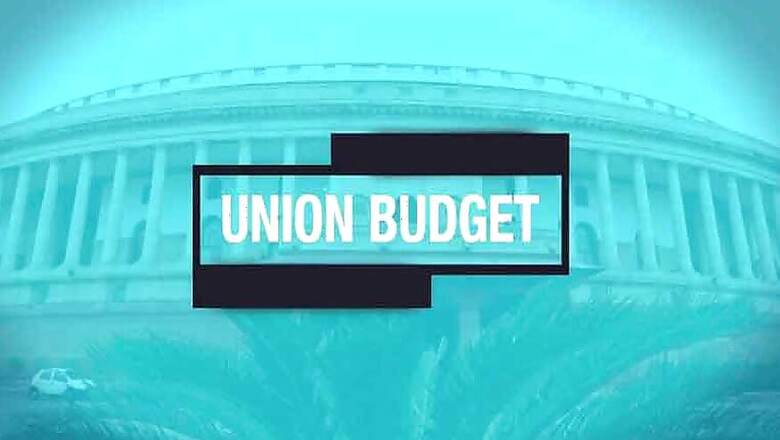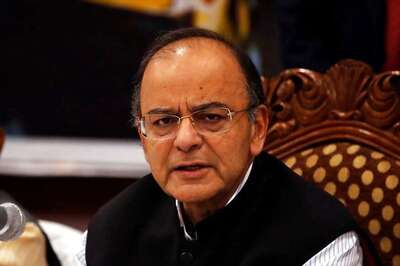
views
The Narendra Modi 2.0 government will present its first full budget on July 5. To be announced by Finance Minister Nirmala Sitharaman in her maiden budget presentation, there are high expectations from the budget. The automobile industry in particular is looking at this year’s budget with a keen eye given the bad phase it is going through. The sales slump, upcoming BS-VI emission norms, electric vehicle policy, GST are some of the points which the industry wants the government to address at this year’s budget.
The EVs were in focus at the Economic Survey 2018-19, tabled in Parliament by Finance Minister Nirmala Sitharaman. The country must emphasise on electric vehicles (EVs) as these represent the next generation in sustainable mobility and appropriate policy measures are needed to lower the overall lifetime ownership costs to make them an attractive alternative to consumers, according to the Survey.
Here are some of the recommendations and expectations of the automobile industry in India from the Union Budget 2019.
Recommendations by ACMA:
Technology Development & Acquisition Fund - A fund for supporting R&D and indigenous technology development for shift from BS IV to BS VI, electric mobility and to meet new regulations on safety emission and environment is highly recommended. Such a fund could also be utilised for in-house development or for acquisition and assimilation of technologies through licensing agreements, acquisitions etc.
Reduction of basic custom duty on Raw Material - Steel and aluminium alloys attract basic custom duty i.e 15% and 10% respectively. The sector, largely dominated by MSMEs is facing a huge challenge in availability of raw materials at right price. A reduction in customs duty on all alloy steel and secondary Aluminium Alloy items including scrap is strongly recommended.
Incentivising R&D Spend - To encourage domestic R&D and testing, it is important to provide exemption on import duty on auto component prototypes. Also retaining of weighted tax deduction on R&D expenditure is critical. The 2016-17 Budget reduced weighted deduction benefit from 200% to 150% and has further restricted the deduction to 100% from 1st April 2020.
Investment Allowance - Provision to reintroduce investment allowance at 15% for manufacturing companies that invest more than Rs. 25 crore in plant and machinery.
Recommendations by FADA:
GST Rates on all New Vehicles should be regulated to boost volumes in Automobile sales. This will also help in off-setting the price hike as the New Safety Norms and Higher Insurance Premiums are already increasing the cost of ownership of a vehicle. This coupled with implementation of BS-VI will even further increase the prices of Commercial Vehicles, Passenger Vehicles and Two Wheelers by another 10-15%.
Attractive enough incentive for successful implementation of Vehicle Scrappage Policy across the country will have benefits of reducing pollution, reducing fuel consumption, improving safety (reducing fatalities from 1,40,000 people presently killed annually in road traffic crashes) and also giving a boost to the Auto Sales.
Expectations of Automobile industry:
Martin Schwenk, MD & CEO, Mercedes-Benz India
“Given the favourable outcome of GST in terms of rising revenue, we wish the Government would reconsider the rationalization of GST rates for cars which currently attracts 28% GST and 17-22% Compensation Cess. We recommend a downward revision of GST rate on all cars to 18% from 28%, and a proportionate reduction of CESS to around 15% for all cars above 4 meters. This will act as a much needed catalyst for growth of the industry, especially when it is facing subdued customer interest due to multiple factors like rise in insurance costs, inflationary hikes, liquidity crunch and forthcoming price increase due to BSVI implementation. To revive the slowing down auto sector, we also recommend to consider offering ‘depreciation’ benefit on vehicles to individuals.”
Nishant Arya, Executive Director, JBM Group
"We are anticipating the forthcoming budget to be an optimistic one for the auto industry. There are a lot of challenges that the industry is currently facing and the push towards EV means that a lot more needs to be done in the near future. The proposed reduction of GST on e-vehicles from 12% - 5%, and from 18% - 12% on EV chargers will give the much-needed boost to the EV sector and encourage electric vehicle adoption. Moreover, the budget must also bring in incentives on investment on EV technology and subsidy on capex for setting up EV manufacturing plants. The next three years will be crucial for the Indian auto industry in terms of investments in EV and I believe tax incentives must be extended to manufacturers as well."
Diego Graffi- MD & CEO Piaggio Vehicles Pvt. Ltd
“The Automobile industry needs support from the Government in this year’s union budget as the auto sector is facing one of its most challenging periods in the last few years. I feel GST on automobiles should be reduced from 28% to more rational level of 18% as this will absorb some of the cost impact of the future introduction of BS VI at and this will add to affordability for the customer & be an impetus to growth.
A comprehensive policy on the scrapping of old vehicles will not only benefit emission aspects but will in addition help the auto sector & consumers with new technology vehicles. As far as electric vehicles are concerned we are looking forward to comprehensive policy on the phased introduction of EVs in India.”
N Naga Satyam, Executive Director, Olectra Greentech
“We strongly believe that the EV (Electric Vehicles) adoption in our country certainly needs support from the government. Though the long-term benefits of EVs are multi-fold still the relatively higher cost of acquisition of an EV is a bottleneck in its adoption. We expect the government to include Electric Vehicles in Priority lending sector so that the prospective buyers can be encouraged to move towards this environment friendly transport option. The financial assistance will help in compensating the cost difference of the EVs making it more attractive for the buyers.”


















Comments
0 comment